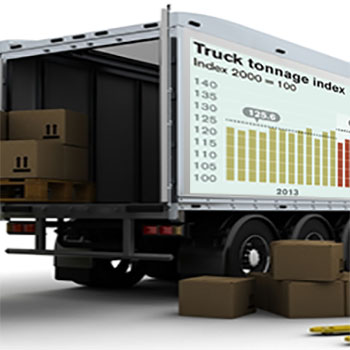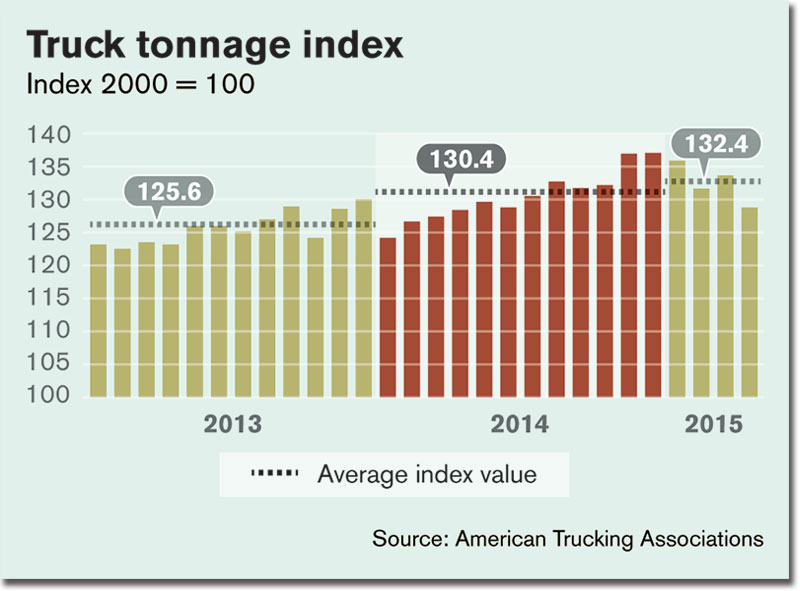2015 State of Logistics Less-than-Truckload

Shippers should expect rate increases in the 3 percent to 5 percent range, higher in some geographic lanes, depending on a shipper’s individual freight profile with its carriers.
As we roll deep into 2015, the $37 billion less-than-truckload (LTL) sector remains solidly profitable overall.
LTL capacity is closely aligned with demand, and with significant barriers to entry in the sector, little additional capacity is expected in the near future.
However, a closer dive into the sector reveals widely varying levels of profitability.
The reasons for that high variability in profits are many, but mostly those carriers with operational excellence and a knack for matching available capacity to demand are the most profitable, analysts say.
According to statistics compiled by trucking analyst firm SJ Consulting, yield growth, as measured by revenue per hundredweight, for the major LTL carriers rose by 5.1 percent in the first quarter of 2015 - the highest yield growth in the LTL sector in the past eight quarters.
“From an industry perspective, to maintain profitability and generate enough returns to reward drivers with pay increases, LTL carriers need to continue to manage capacity,” says Satish Jindel, principal of SJ Consulting. And a few LTL carriers are doing this exceptionally well.
However, Jindel says that there are many in the sector that need improvements in capacity control, pricing, and discipline to avoid the rate wars that have long characterized this sector. “For some in the Top 25, there’s a need to do better,” he says.
Jindel recommends carriers keep capacity at rational levels compared with demand. And he tells them to “be selective” when adding capacity to avoid punishing rate discounting when overcapacity has occurred in the past.
The LTL sector is topped by perennial earnings champ Old Dominion Freight Line (ODFL). Even in a first quarter when most carriers suffered from diminished freight volumes while operating in harsh winter weather, ODFL turned in a bang-up performance.
While posting a 36.3 percent rise in net income to $62.5 million in the first quarter, the Thomasville, N.C.-based carrier also posted a 12.2 percent increase in first quarter year-over-year revenue. ODFL posted a stunning 85.1 operating ratio (OR), 200 basis points better than its 2014 first quarter OR, and is on pace to approach its first $3 billion revenue year in its history.

But it’s not just ODFL’s revenue growth that’s impressive. The carrier is as profitable as any trucking operation in the land, largely because of a diversification strategy that retiring president and CEO David Congdon says started 20 years ago.
At that time, the carrier made a strategic blueprint to diversify away from being merely a Southeast regional LTL carrier to one where customers could choose from a menu of services - LTL, truckload, expedited, intermodal, and ocean brokerage.
However, there are other LTL success stories. They include Pittsburgh-based Pitt Ohio, a carrier that was once exclusively a Northeast regional concern, but in recent years has branched out into long haul LTL and other specialized services. Privately held Pitt Ohio does not disclose exact revenue and income levels, but is believed to be solidly profitable as well.
At the other end of the profitability spectrum, Teamsters-covered carrier YRC Worldwide continues to be barely profitable - even with wage and benefits concessions made by the union. Long-haul carrier YRC Freight posted a 100 OR in the first quarter of 2015 and its three regional units posted a 99 OR. “Improving our yield and freight mix is our No. 1 priority,” says James Welch, YRC’s president and CEO.
Bottom line: Shippers should expect rate increases in the 3 percent to 5 percent range, higher in some geographic lanes, depending on a shipper’s individual freight profile with its carriers.
Image: FRC Logistics Inc.
Article Topics
Old Dominion Freight Line News & Resources
Ranking the Top 50 Trucking Companies of 2024 Top 50 Trucking Companies 2024: Accept the challenge and adapt Old Dominion Freight Line issues February operating metrics LTL Update: Enter the post-Yellow world ODFL issues November operating metrics Estes’ $1.52 billion bid beats ODFL’s bankruptcy offer for Yellow terminals Old Dominion Freight Line issues third quarter operating metrics update More Old Dominion Freight LineLatest in Transportation
Baltimore Bridge Collapse: Impact on Freight Navigating Amazon Logistics’ Growth Shakes Up Shipping Industry in 2023 Nissan Channels Tesla With Its Latest Manufacturing Process Why are Diesel Prices Climbing Back Over $4 a Gallon? Luxury Car Brands in Limbo After Chinese Company Violates Labor Laws The Three Biggest Challenges Facing Shippers and Carriers in 2024 Supply Chain Stability Index: “Tremendous Improvement” in 2023 More Transportation















